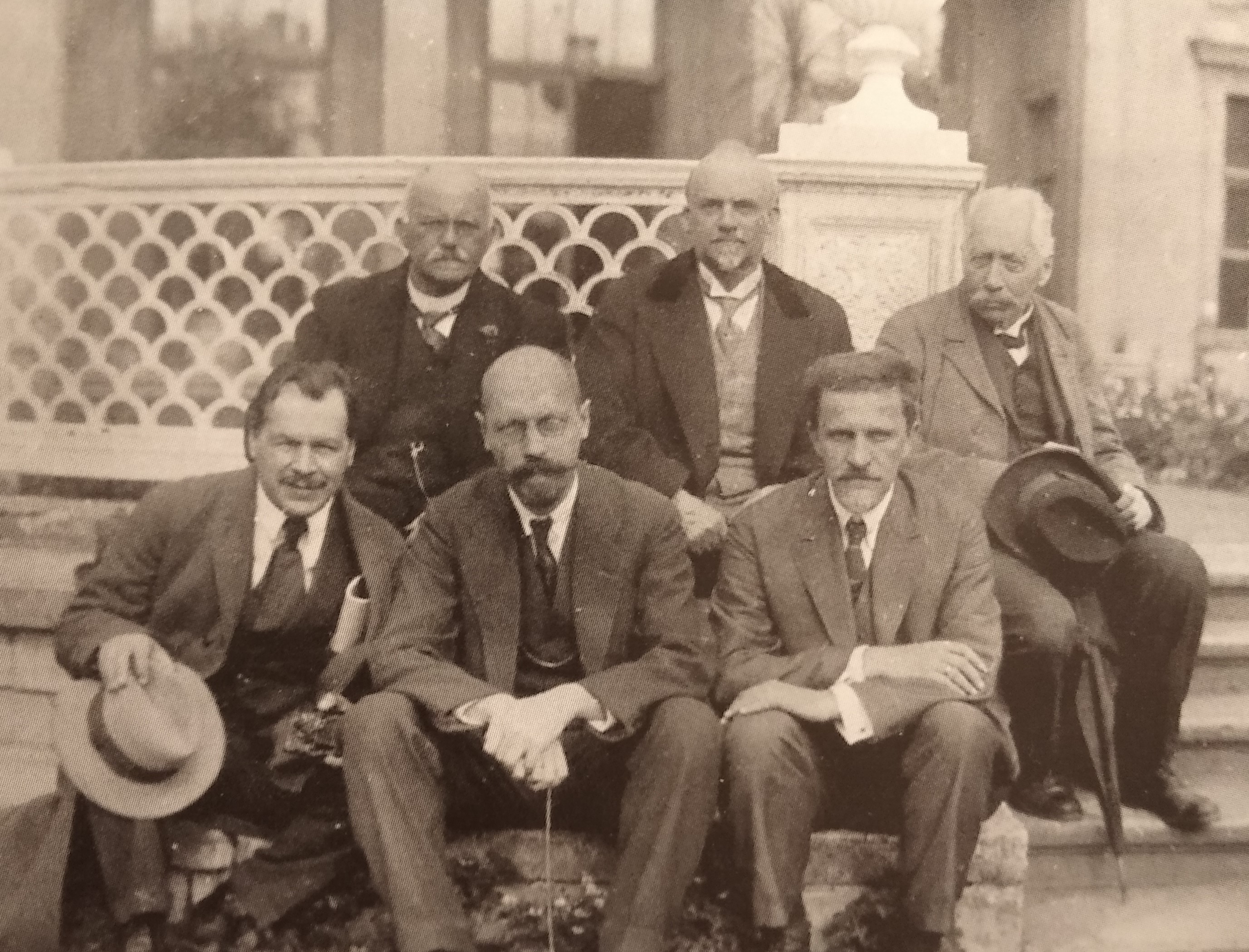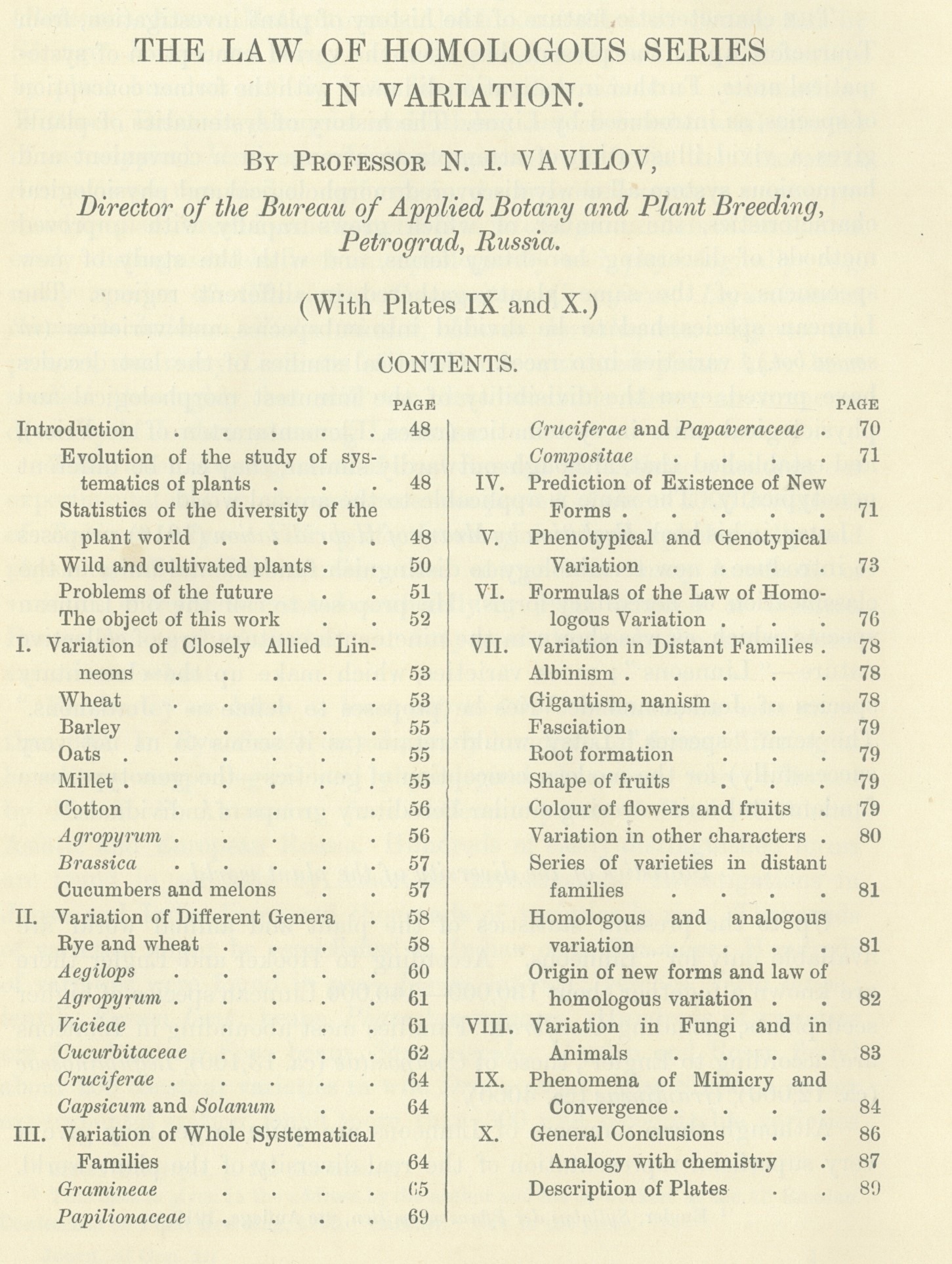
A century has passed since the days when the law of homologous series in variation was first manifested. This event happened in 1920 in Saratov, in the third post-revolution year, in the frameworks of the III All-Russian Conference on Plant Breeding, then mobilized in view of current needs of agricultural practice, science and education. The report of a 33-year-old professor Nikolai Vavilov, who was accompanied by his students from the Saratov University, caused a sensation. Vavilov’s generalization on the phenomenon of the homologous series in variation of cultivated plants was reported on June, 4, 1920 and enthusiastically appreciated by the qualified breeders as a great scientific achievement comparable with the Mendeleev’s periodic Law of the chemical elements. On June 21, 1920, a message of the provincial Saratov branch of the Russian Telegraph Agency shared internationally the information on “the greatest discovery of world significance” which was addressed to the State government by the decision of the meeting.
Very soon after the initial Russian publication (Vavilov 1920), the paper entitled “The Law of Homologous Series in Variation” was published in the Journal of Genetics, edited by W. Bateson and R.C. Punnett, the elder statesmen of genetics (Vavilov 1922).
In 1925, William Bateson, Director of the John Innes Horticultural Institute, with colleagues, visited experimental fields and laboratories of Nikolai Vavilov, Director of the Bureau of Applied Botany and Plant Breeding (future N.I. Vavilov Institute of Plant Breeding) in a Petrograd – Leningrad (now Saint Petersburg) suburb (Fig. 1). The paper took 42 pages of Volume XII (1) (April, 1922, p. 47–89). The substance of this work by Vavilov was recalled in the chapters of N. Timofeeff-Ressovsky (1940) and N. Vavilov (1940) in the monograph “The New Systematics” (Huxley 1940), a synoptic book, preceding the publication on the new synthesis of theory of evolution (Huxley 1942).
Since then and till now, genetic nature of homologous variation, the matter of the Vavilov’s law, has been in the focus of various disciplines, from agriculture to paleontology, being rejuvenated with the progress of molecular biology. Nowadays, molecular homology can be established universally at various levels, from unique genes to gene orders in chromosomes through genetic, cytogenetic and molecular analyses (Zakharov 1987) up to gene networks studied by bioinformatics (Suslov et al. 2008). It seems rational to meet the 100th anniversary of this significant event of young hereditary science with a digital copy saving the author’s idea for future readers and investigators. The text is here reproduced in the Archives format from printed pages of the Introduction (p. 48–53) and the concluding section (p. 86–89) of the original English version (Vavilov 1922). The title page copied on Fig. 2 presents the whole contents of this work. Details of punctuation and citation are generally saved.
N. Bulatova

Citations:
Vavilov NI (1922) The law of homologous series in variation. Journal of Genetics 12(1): 47–89. https://doi.org/10.1007/BF02983073
Bulatova N (2020) Archives: The law of homologous series in variation (N.I. Vavilov). Comparative Cytogenetics 14(3): 329–338. https://doi.org/10.3897/CompCytogen.v14i3.54511
--------------------------------------------------------
Figure 1.
N. I. Vavilov (left below) and Russian geneticists V.A. Dogel, Yu.A. Filipchenko with the visiting European delegation: H. Federley, O. Fogt and W. Bateson (left to right in the second row). 1925, Leningrad (Vavilov 2012).
Figure 2.
The title page of the Vavilov’s paper in the Journal of Genetics, 12(1), 1922.
